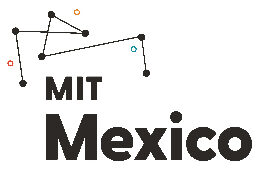Dear Merici Community,
I start this edition by sharing a wonderful piece of art by Margaret Lazzari, an American contemporary artist. Even when the piece might take us to think of it as a beautiful abstract landscape of skies, the actual inspiration of this piece named “Aqueous” came from a radiographic image of an active brain that boasts great activity and interconnectedness.
As some of us joined last week for the 2022 NAIS (National Association of Independent Schools) Conference, an association to which our school is affiliated, we were delighted to hear Professor Mary Helen Immodino-Yang, from the University of Southern California (USC). In her works in Education, Psychology and Neurosciences, she has come to reaffirm that learning and thinking cannot be solely studied by compartments, as some approaches may still suggest. As much as she acknowledges that some brain areas are more directly involved in certain functions, like cognition, emotions, socialization, etc., in real life, the brain represents a deeply interconnected set of networks that are cognitively and affectively organized at all times. Cognition and learning, as much as emotional dispositions, soft skills and other brain functions work in symphony as part of our human nature. Our brains and minds are constantly co-regulating and coordinating all along and resonating with other brains. Our ideas, identity, culture, relationships, emotions, social patterns, imagination, knowledge, skills, cognition, all play a dynamic role as we engage in learning and thinking. This is partly shown in the piece of art displayed above, which is based on an MRI (magnetic resonance image) showing what brain activity is like.
This lecture came to diversify and deepen what we had learnt the previous week, during our Professional Development and Consultancy sessions with Mr. Charles James, from the Center for Transformative Teaching and Learning, well known as Chuck by our Merici Community, as he shared with us how teachers can literally be “Brain Changers” as they grow in their understanding of the organic nature of human brain and how teaching must exalt narratives, conversations, storytelling, physical activity that add whole sense and meaning to what we do and why we do it. His sessions illustrated how Project-Based Learning and Design Thinking can foster a deeper need for solving problems thus generating stronger neural connections.
In Chuck’s words:
“Design is the process.
Creativity is the mindset.
Imagination is the root.
Humanity is the purpose.
Empathy is the compass.
Innovation is the result”.
During an activity called “Our learning journeys”, we were taken to remember how each of us had had a unique path in learning which was constantly marked by life experiences, relationships, associations, events and ideas, especially those that come from personal narratives, that reflect students’ agency in their own processes.
Don’t forget to visit our Pedagogical Blog where you will also find a recently published article by Mr. Charles James in relation to Neurosciences and Project Based Learning – Design Thinking.
With warm regards,
Prof. Alfonso García Williams,
Head of School.






